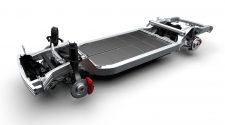Not again…
Yesterday I created an article on a cube root trick, so today I’m creating something similar to that. More party tricks useful Mathematical tricks.
Does your number end with 5?
Firstly, if your number ends with a 5, then you’re pretty lucky.
If the number you’re trying to square’s unit digit is 5, then there’s a MUCH simpler trick, although the 2nd trick will still work.
If it doesn’t end with a 5, then scroll ahead (or click this to be autoscrolled)
Because your number ends with a 5, you can just write 25 as the last 2 digits of the square of that number. (25 is 5^2)
Your answer looks like __25, and finding these other digits will take you around 1 second.
For instance your number is 115, you separate this into 11 and 5. You already wrote the 25 so you’re done with the 5.
With the 11, you can discover the other digits by doing 11 x (11 + 1).
Which will turn out to be 11 x 12, now if you know your tables well you’ll get 132.
The answer to 115^2 = 13225.
This trick works for smaller numbers too!
-
25^2 = (2 * 3)25, or625 -
75^2 = (7 * 8)25or5625
Otherwise
Otherwise, we were trying to calculate the square of any 2 digit number.
For instance, we’re squaring 32.
-
Step 1: Take the number and add its unit digit to itself. In this case, this would be adding32 + 2, which will give us a sum of 34. -
Step 2: Multiply the sum with the first digit of the number. In this case, this would be multiplying34 x 3, which will give us a product of 102. -
Step 3: Attach this product to the square of the unit digit. In this case, this would be attaching 102 to 2^2, which will give us 1024.
This trick will work for any 2 digit number.
Conclusion
It’s fairly simple to square 2 digit numbers mentally, but it requires constant practice – and that’s just Mathematics.
I have a handful of tricks up my sleeve which combined helped me in examinations in both math and physics, and this is just one of them.
To all those who ENJOY Mathematics as a subject, I feel you.














